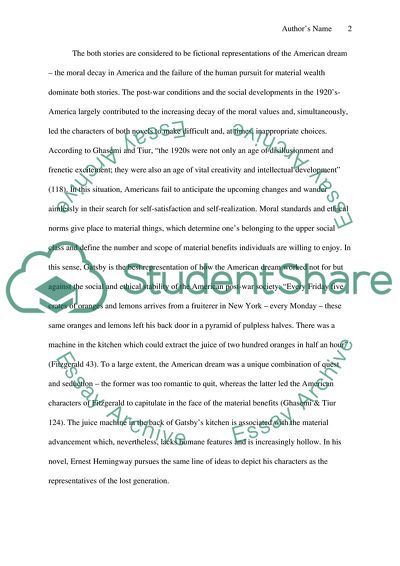Cite this document
(America and the Decay of Morality: The Great Gatsby and The Sun Also Research Paper, n.d.)
America and the Decay of Morality: The Great Gatsby and The Sun Also Research Paper. Retrieved from https://studentshare.org/literature/1743843-the-representation-of-america-and-of-american-modernity-in-the-great-gatsby-and-the-sun-also-rises
America and the Decay of Morality: The Great Gatsby and The Sun Also Research Paper. Retrieved from https://studentshare.org/literature/1743843-the-representation-of-america-and-of-american-modernity-in-the-great-gatsby-and-the-sun-also-rises
(America and the Decay of Morality: The Great Gatsby and The Sun Also Research Paper)
America and the Decay of Morality: The Great Gatsby and The Sun Also Research Paper. https://studentshare.org/literature/1743843-the-representation-of-america-and-of-american-modernity-in-the-great-gatsby-and-the-sun-also-rises.
America and the Decay of Morality: The Great Gatsby and The Sun Also Research Paper. https://studentshare.org/literature/1743843-the-representation-of-america-and-of-american-modernity-in-the-great-gatsby-and-the-sun-also-rises.
“America and the Decay of Morality: The Great Gatsby and The Sun Also Research Paper”, n.d. https://studentshare.org/literature/1743843-the-representation-of-america-and-of-american-modernity-in-the-great-gatsby-and-the-sun-also-rises.


